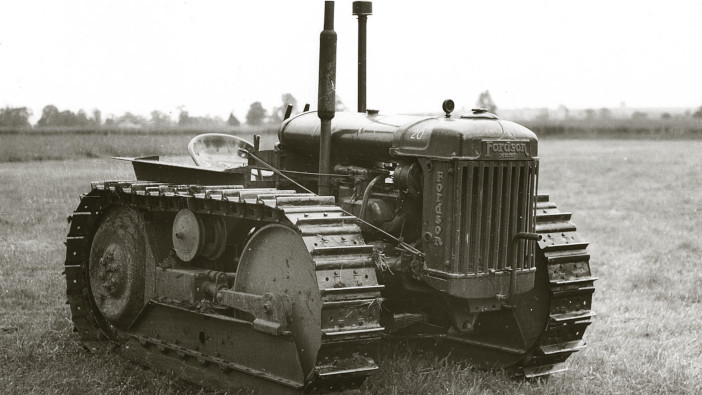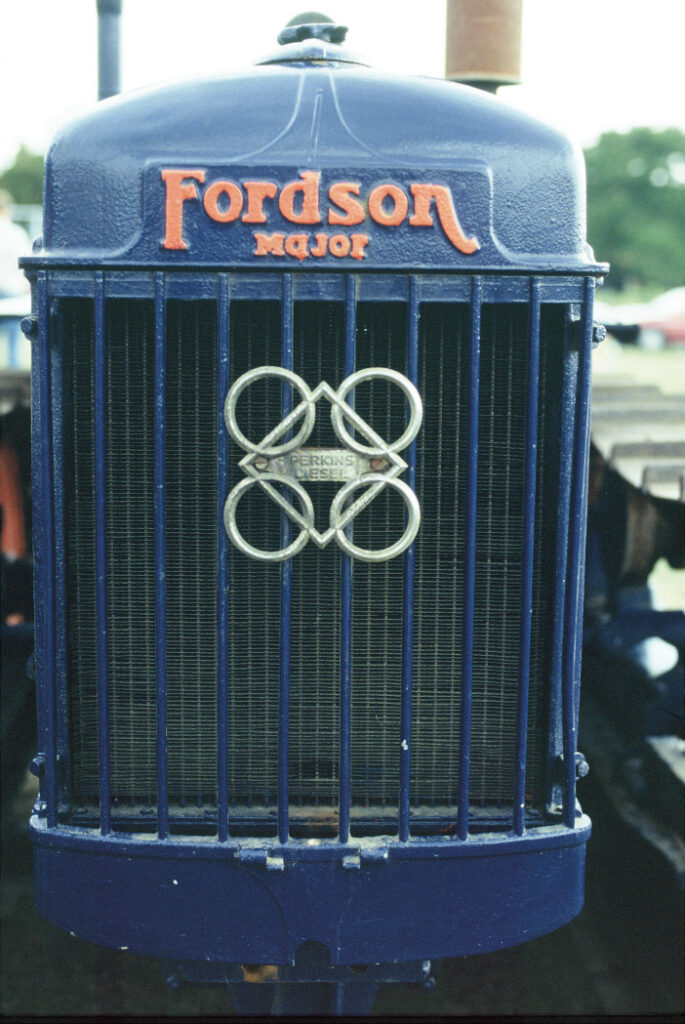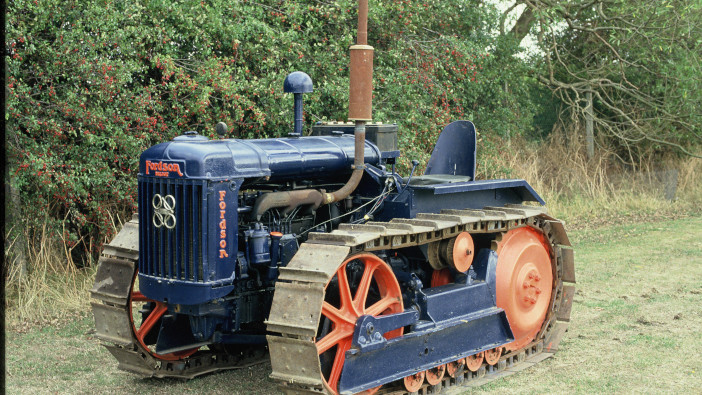County made a huge contribution to the development of four-wheel drive, but their tractor success began with tracklayers and before that the company had specialised in Ford truck conversions. Mike Williams reports.
The truck conversions first appeared in the mid-1920s and included adding a third axle or four-wheel drive to provide improved performance. The trucks were successful and sales increased after the Tapp brothers, who ran the business, formed a new company called County Commercial Cars in 1929. There was a further rapid increase in demand for the truck conversions because of military contracts during the war, with County continuing to work closely with the Ford company, and the wartime activities also included making small one and two-man tanks for the army.

The increasingly extended Ford was the obvious choice of supplier when County began work on their first tractor conversion in 1947. The pre-production version of the County tractor based on a Fordson E27N Major was tested by the National Institute of Agricultural Engineering in 1948 and tractor production started later that year at the County factory at Fleet, Hampshire. The first tractors were supplied to the Government under a programme to boost UK food production, but County tractors were available for general sale by early 1949. The new model was known at first as the County Crawler, but the County Full Track or CFT name was adopted officially at an early stage.
County’s decision to build a tracklaying tractor came at just the right time, and the E27N Fordson was the best British built tractor to base it on. Britain’s farming industry had entered a post-war period of increased investment, with tractor power one of the big growth areas, and tracklayers were the popular choice for customers needing extra pulling power or improved stability for steep land. The Fordson’s excellent international reputation for reliability and service back-up became a significant asset as County tractors were increasingly established in export markets as well as the UK.
The E27N Major had arrived on the market as the war was ending in 1945. It replaced Henry Ford’s Model F and Model N tractor series that had dominated the UK tractor market for more than 25 years. Although it was a new model, the spark ignition engine that powered the first production version of the E27N was based on the four-cylinder power unit used in the original 1917 Fordson Model F, the most successful engine in tractor history.
The capacity of the E27N version of the engine was 4380cc with 30.6hp maximum output available, but Ford introduced a six-cylinder Perkins P6 diesel option for the E27N Major in 1948, and this engine became available for the CFT tractor during the following year, boosting the power output to 45hp. The Fordson transmission for the E27N included a three-speed gearbox, and this was modified on the County version to give a 3.38 mph top speed instead of the 9.65 mph maximum available on the E27N equipped with rubber tyres. The CFT tractor’s final drive was through a spiral bevel to the countershaft and a straight spur gear drive to the rear axle. There were five track rollers on each side with specially hardened tyres, and the ground pressure using the standard 12in track plates was said to be 4.5lb per sq in.
The list price for the CFT tractor with a standard specification, including the Fordson engine, was £765 in 1949. This was a considerable premium over the 1949 Fordson E27N tractor prices which started from £226 for the standard model, and the Row-Crop version on rubber tyres was in the price list at £285. In spite of the big price difference the CFT was a success, giving an effective boost to County’s arrival in the tractor market.
Apart from adding the diesel-powered engine option, County’s first tractor required few design changes during its production run. The obvious visual alteration came in 1950 when the solid disc type track idlers specified originally were replaced by a new cast design with spokes. County also introduced a more robust track frame design to cope with the extra power available from the diesel engine as well as the tractor’s increasing popularity for industrial and forestry work.

Ford continued to build the E27N Major tractor until 1951 when it was replaced by the Fordson E1A Major or ‘New Major’ series, bringing a complete break from the Fordson series that had started in 1917 with the Model F. The new tractor featured eye-catching, rounded styling, a six-speed transmission plus an engine choice that included an excellent new Ford diesel. At this stage tractor production at the County factory had outgrown the original truck conversion business, and they announced a new tracklayer known as the Z model, which was based on the latest Fordson and was available from late 1952 as a replacement for the CFT – although some new CFT tractors were still being delivered from the factory in 1954.
At this stage County tractor production was still based on tracklayers, with an increasingly varied choice of models, and when their first four-wheel drive model arrived in 1954 it still included some tracklayer technology. One of County’s early export successes was supplying tractors for sugar cane production in the West Indies, where there was a special requirement for wheeled tractors hauling large quantities of cane from the farms to the processors. County developed the Fordson based Four-Drive tractor to handle this transport work, using four-wheel drive through equal diameter front and rear wheels, but with steering developed from the lever operated skid system featured on tracklayers. Although the Four-Drive was developed for a specialised market, its skid-steer system had limitations for wheeled tractor operations.
In spite of the unusual steering, the Four-Drive helped to demonstrate the benefits of four-wheel drive using large diameter wheels, and by the mid-1960s County’s tracklayer production had been replaced by their successful four-wheel drive tractor range.


